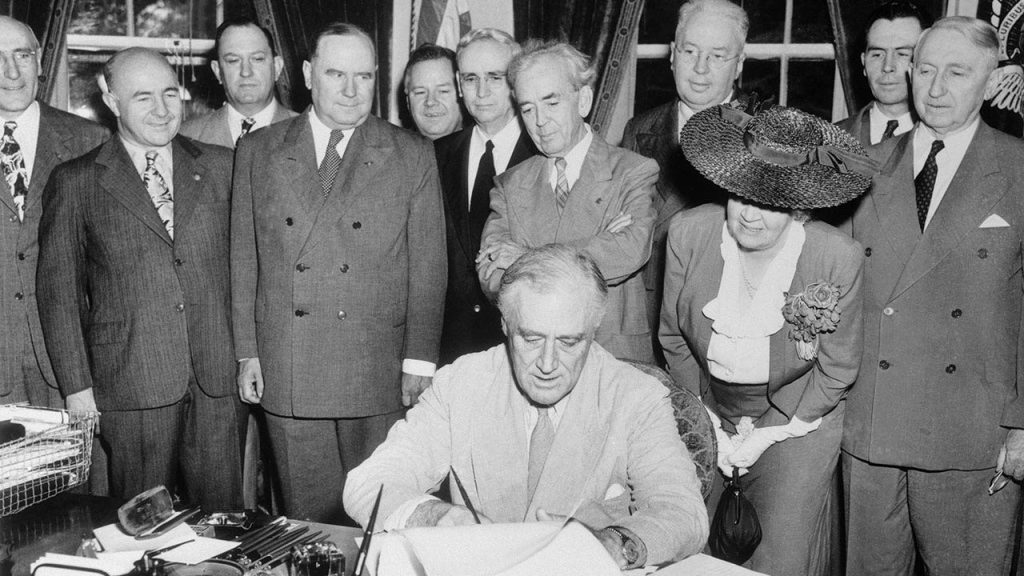On June 22, 1944, President Franklin D. Roosevelt signed the GI Bill, officially known as the Servicemen’s Readjustment Act of 1944. This legislation was designed to compensate returning members of the armed services for their service and efforts in World War II. The American Legion played a significant role in advocating for the provisions included in the bill, which provided access to unemployment compensation, low-interest loans for homes and businesses, and funding for education. The bill became known as the “GI Bill of Rights” as it aimed to help veterans transition to civilian life by offering federal aid in various areas.
One of the key aspects of the GI Bill was its emphasis on education. The act provided tuition, subsistence, books, supplies, equipment, and counseling services for veterans so that they could continue their education. Under this bill, millions of veterans were able to attend colleges and universities, receive school training, and participate in on-the-job training. The number of degrees awarded by U.S. colleges and universities doubled between 1940 and 1950, and the percentage of Americans with bachelor’s or advanced degrees also saw a significant increase.
The GI Bill had a lasting impact on the educational landscape of the United States. As educational institutions opened their doors to a new population of students, there was widespread improvement and expansion of university facilities and teaching staff. New vocational courses were developed across the country, providing veterans with advanced training in various fields. Additionally, the GI Bill supported the baby boom period by addressing the housing shortage through home loan provisions. By 1955, 4.3 million home loans worth $33 billion had been granted to veterans, leading to a significant boost in the economy and prosperity for a generation.
Although the original GI Bill ended in 1956, newer programs have continued to allow veterans from subsequent wars, such as Korea, Vietnam, Iraq, Afghanistan, and others, to pursue higher education and access new career opportunities. American historians have regarded the GI Bill as one of the most successful pieces of social welfare legislation ever developed, providing a reward to soldiers for their service in World War II and beyond. Over a 50-year span, the GI Bill impacted millions of veterans and their dependents, with a total federal investment of $67 billion. Notable figures who have benefited from the bill include former Presidents George H.W. Bush and Gerald Ford, former Vice President Al Gore, and entertainers Johnny Cash, Ed McMahon, Paul Newman, and Clint Eastwood.
In 1990, President George H.W. Bush highlighted the transformative impact of the GI Bill, stating that it changed the lives of millions by replacing old roadblocks with paths of opportunity. The bill’s support for education, housing, and career advancement played a crucial role in helping veterans reintegrate into civilian life and contributed to economic growth and prosperity in the post-war period. The legacy of the GI Bill continues to resonate to this day, as it remains a symbol of the nation’s commitment to supporting those who have served in the armed forces and defending freedom.


